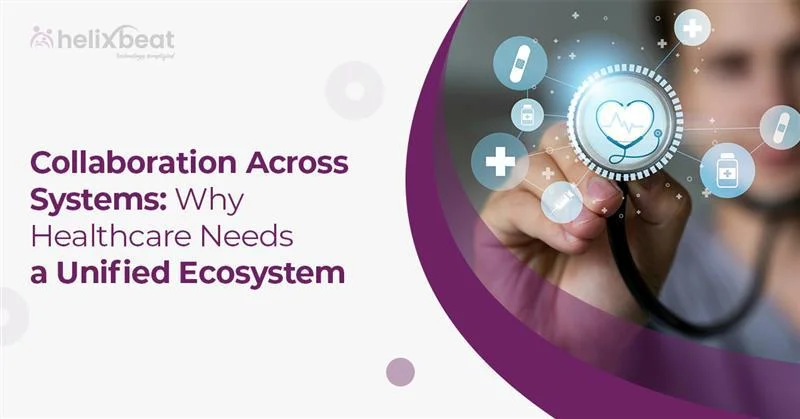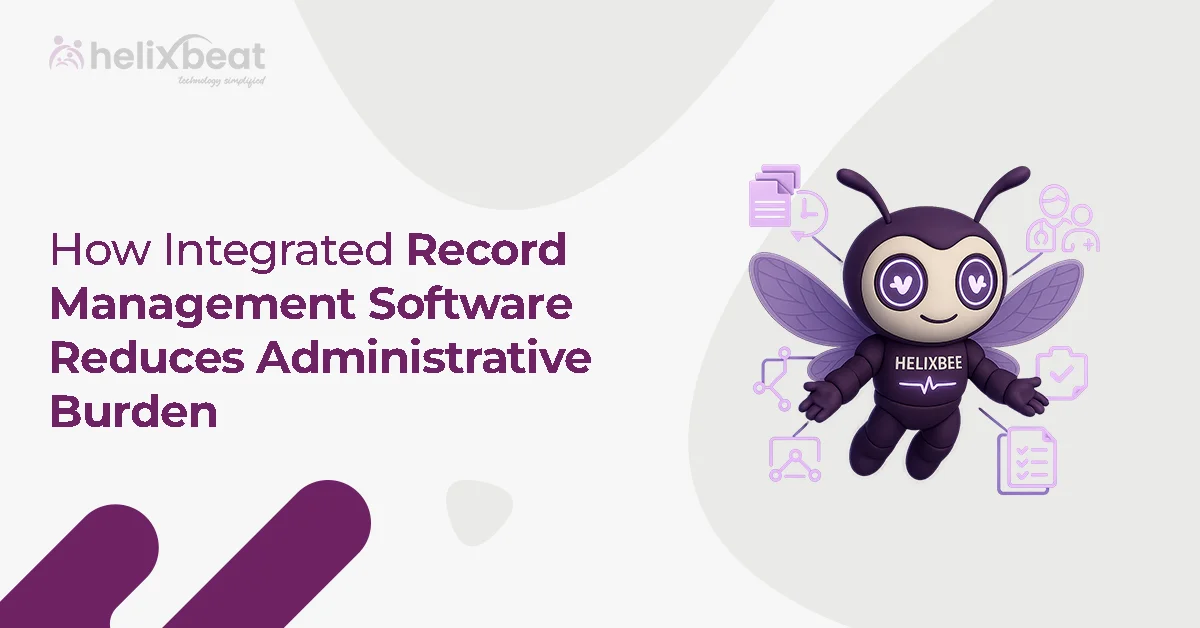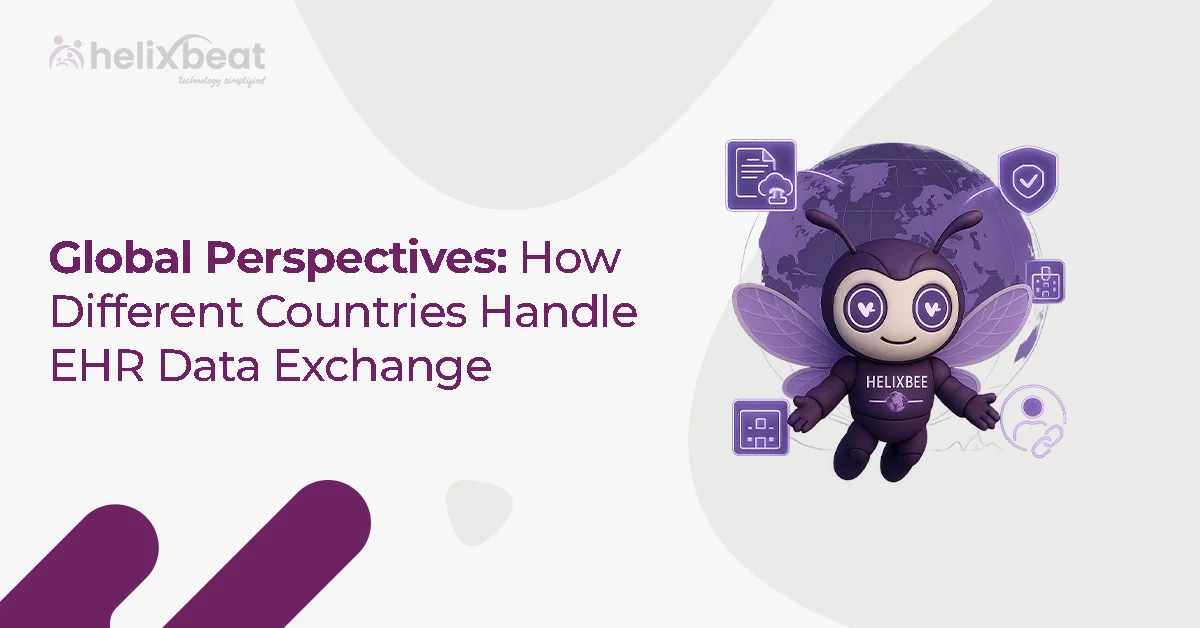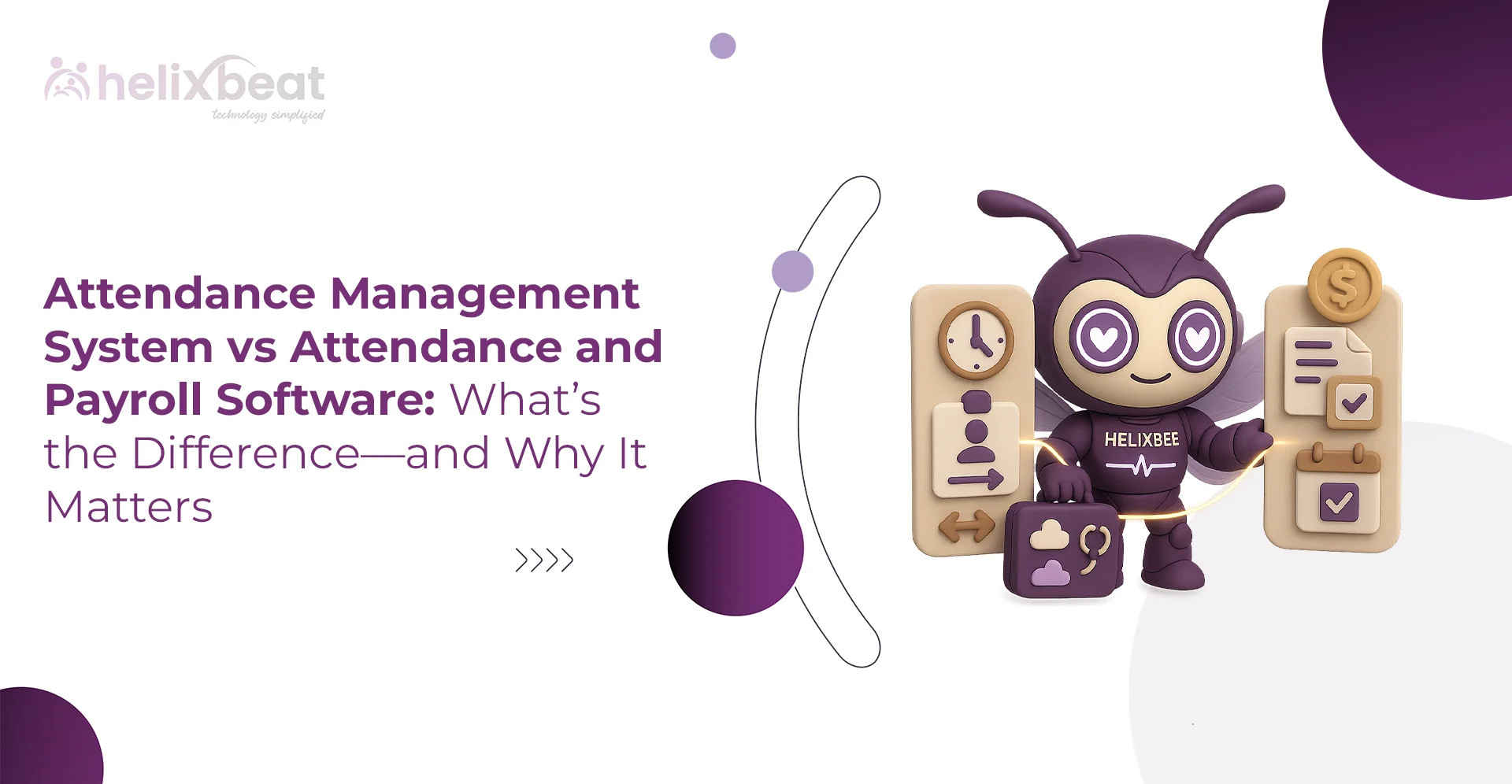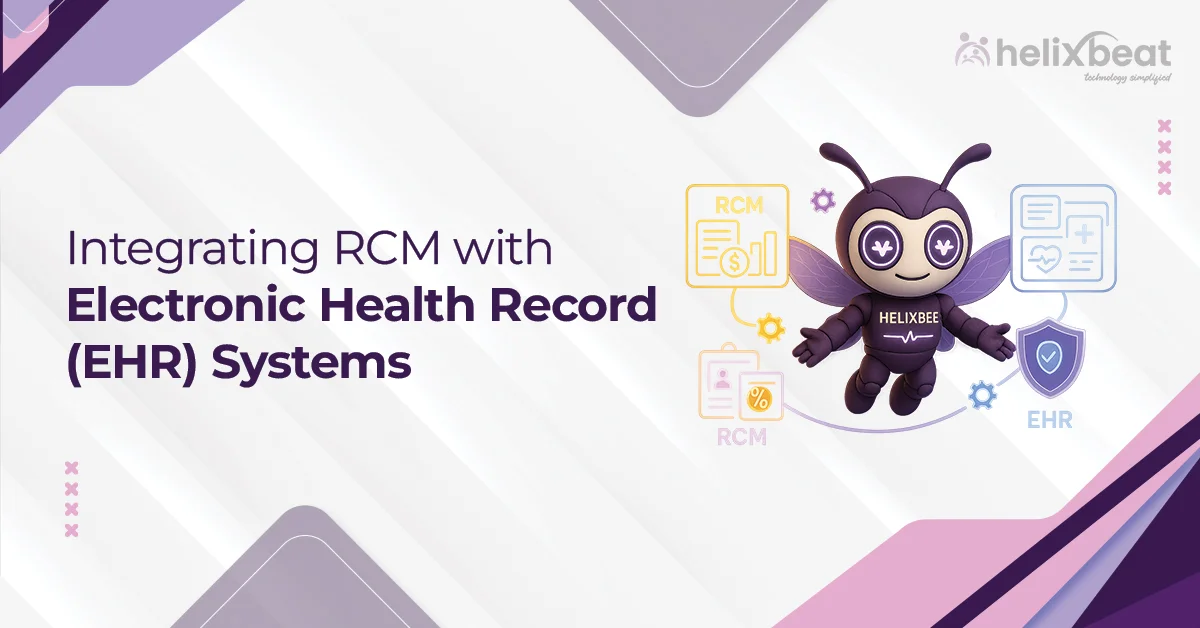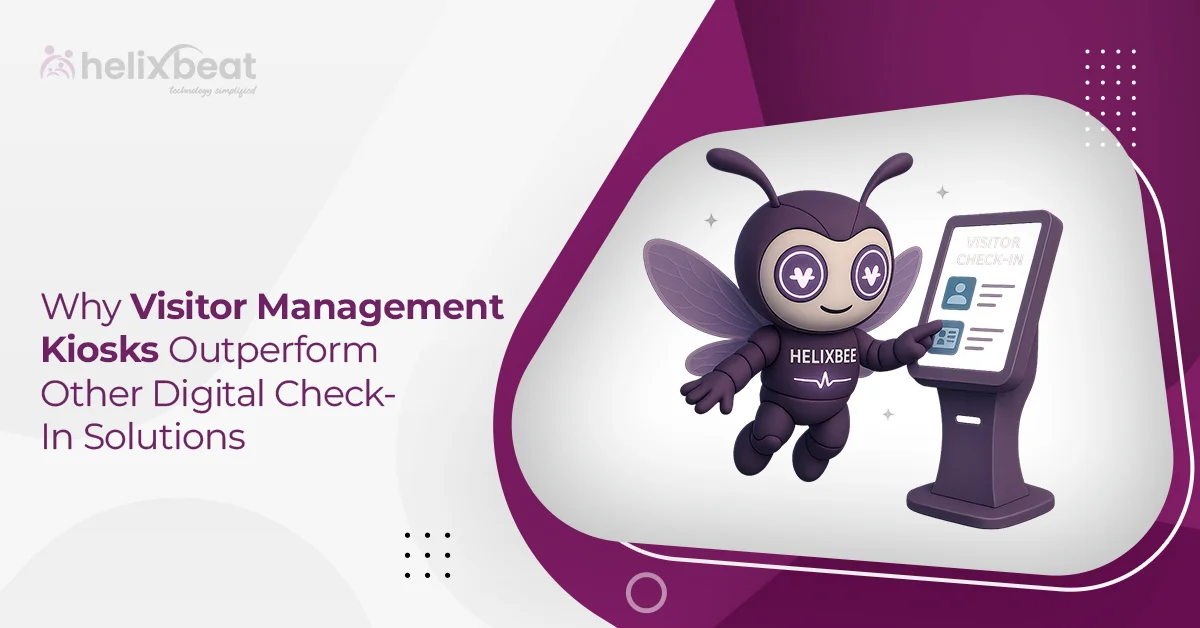In modern healthcare, the ability to collaborate across systems isn’t just a convenience—it’s a necessity. Imagine a world where doctors, nurses, and specialists seamlessly share information and eliminate delays or errors caused by fragmented systems. Unfortunately, this remains a distant reality for many, with disconnected systems creating roadblocks that hinder care and frustrate patients. But change is on the horizon. The vision of a unified healthcare ecosystem—where patient data flows effortlessly across platforms—has the potential to revolutionize care delivery, improve outcomes, and put patients back at the center of their health journey. Let’s discuss how.
Table of Contents
The Current State of Healthcare Systems
Globally, healthcare systems are often characterized by siloed operations. Hospitals, clinics, pharmacies, and laboratories frequently operate on disparate platforms, which leads to inconsistent data sharing. For example:
- Data Fragmentation: Data fragmentation is a big challenge in healthcare. Studies have shown that limited data sharing between healthcare providers can lead to critical delays in patient care, such as missed diagnoses and inappropriate treatments. For example, a study published in the Journal of the American Medical Informatics Association found how issues with health information technology can disrupt care delivery and potentially harm patients.
- Inconsistent Care: Patients often have to repeat tests or provide the same information to multiple providers, which results in frustration and higher costs. Studies indicate that healthcare organizations frequently encounter duplicate patient records, with rates ranging from 10% to 18%.
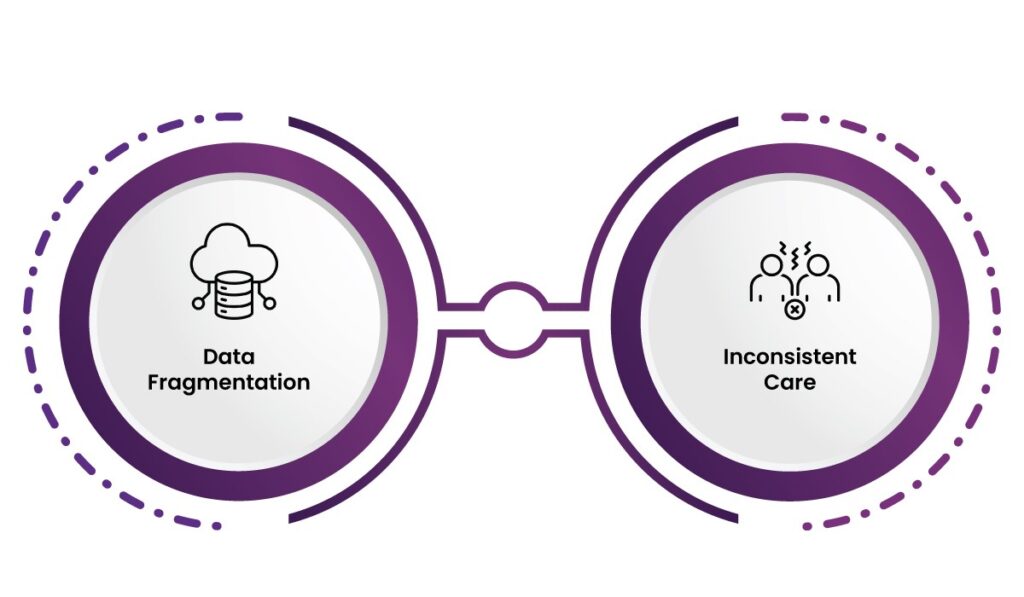
Why Healthcare Needs a Unified Ecosystem?
A unified healthcare ecosystem addresses these challenges by centralizing patient data and enabling seamless collaboration among stakeholders. Here’s why this approach is necessary:
1. Improved Patient Outcomes
Access to comprehensive patient data allows healthcare providers to make informed decisions quickly. For example, a cardiologist who has access to a patient’s complete history—including lab results, medications, and imaging—can provide more accurate diagnoses and treatment plans. This reduces the risk of errors and enhances the overall quality of patient care.
2. Enhanced Efficiency
Centralized data eliminates the need for repetitive paperwork and redundant tests. Therefore, providers can instantly retrieve relevant information, saving valuable time. In emergencies, this efficiency can be life-saving. A unified system also streamlines administrative tasks and allows healthcare professionals to focus more on patient care.
3. Cost Reduction
A unified ecosystem reduces operational costs by minimizing redundancies and optimizing resource allocation. Patients also benefit from lower medical expenses by avoiding unnecessary procedures and duplicate testing. For example, a study by the National Academy of Medicine estimates that interoperability across systems could save the U.S. healthcare system over $77 billion annually.
4. Data-Driven Insights
A unified repository facilitates advanced analytics, which can provide actionable insights into patient populations. As a result, healthcare providers can identify trends, predict outbreaks, and implement preventive measures. For example, during the COVID-19 pandemic, countries with strong public health systems and well-integrated data systems, like South Korea and some European countries, were generally considered to have more effective responses to the pandemic.
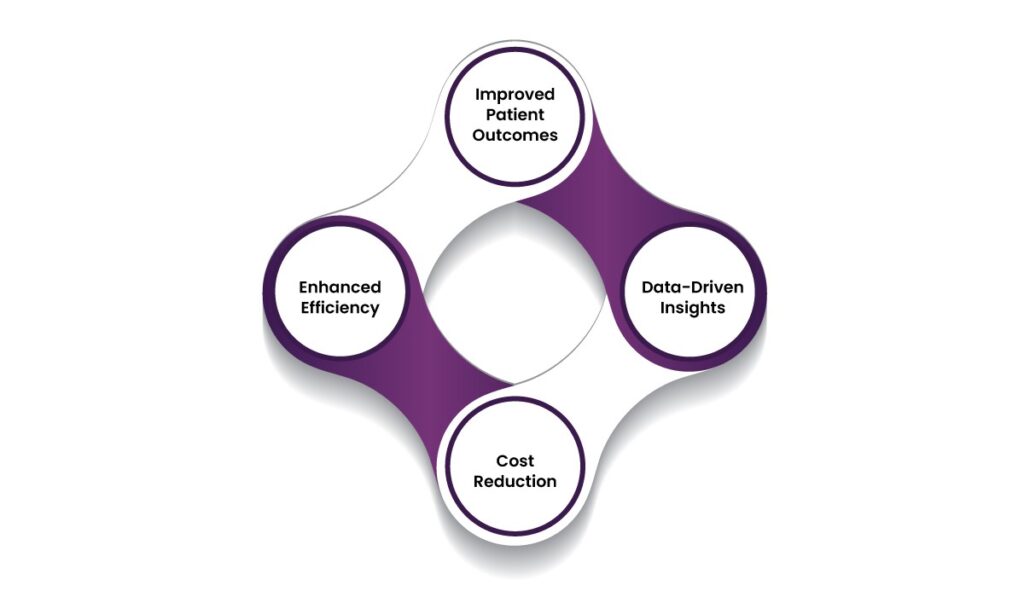
The Role of a Central Repository of Patient Data
At the core of a unified healthcare ecosystem lies the central repository of patient data. This repository serves as a single source of truth and facilitates interoperability and collaboration across platforms. Here’s how it contributes to creating a cohesive system:
1. Streamlined Communication Among Providers
Seamless data sharing empowers healthcare providers to communicate more effectively. For example, when a patient is referred to a specialist, access to a shared patient data repository eliminates delays and ensures that the specialist has all the necessary information for optimal care.
2. Comprehensive Patient Profiles
A central repository consolidates data from multiple sources—such as electronic health records (EHRs), wearable devices, and laboratory systems—to create a holistic view of the patient. This comprehensive profile enables personalized treatment plans and promotes a more patient-centric approach.
3. Real-Time Data Access
Real-time access to patient data is critical, especially in emergencies. For example, if a patient arrives at an emergency room unconscious, the attending physician can quickly retrieve their medical history, allergies, and ongoing treatments from the central repository. This information can significantly influence treatment decisions and outcomes.
4. Enhanced Data Security
Contrary to concerns about centralized data being more vulnerable, a well-implemented repository can enhance security. Modern systems incorporate robust encryption, access controls, and audit trails to safeguard sensitive information. Moreover, a centralized approach simplifies compliance with data protection regulations.
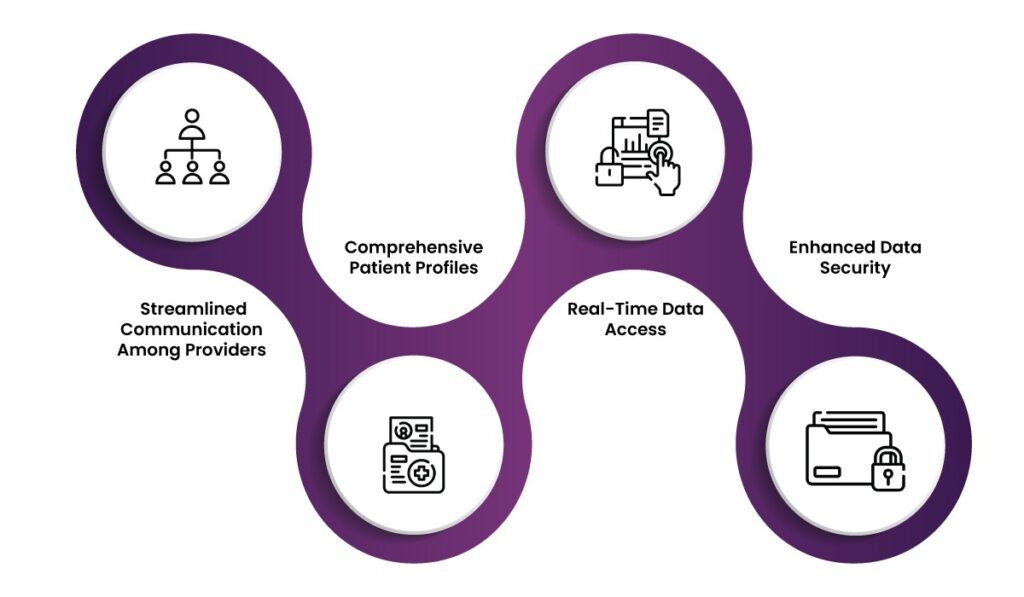
The Road Ahead: Building a Unified Future
To realize the vision of a unified healthcare ecosystem, stakeholders must adopt a collaborative and strategic approach. Key steps include:
1. Adopting Interoperable Standards
Organizations must transition to standardized data exchange protocols like HL7 (Health Level 7) and FHIR (Fast Healthcare Interoperability Resources) for seamless communication between diverse healthcare systems. These standards create a common language for sharing medical data and facilitate real-time updates. For example, adopting FHIR allows electronic health record (EHR) systems to integrate patient information more effectively across various providers.
2. Investing in Infrastructure
Building a reliable IT backbone is fundamental for supporting large-scale data exchange and storage. Therefore, governments and private entities should prioritize funding for technologies like cloud computing, which provides scalable and accessible storage solutions. Cloud-based repositories can securely store patient data and enable providers to retrieve information quickly, even across geographically dispersed locations.
3. Educating and Empowering Users
Educating healthcare professionals and patients on how to navigate digital systems effectively is a cornerstone of successful implementation. Training programs for medical staff can focus on using EHRs, understanding data privacy protocols, and interpreting digital health records. For patients, accessible interfaces and robust support systems can make it easier to access their medical histories, schedule appointments, and understand their treatment plans.
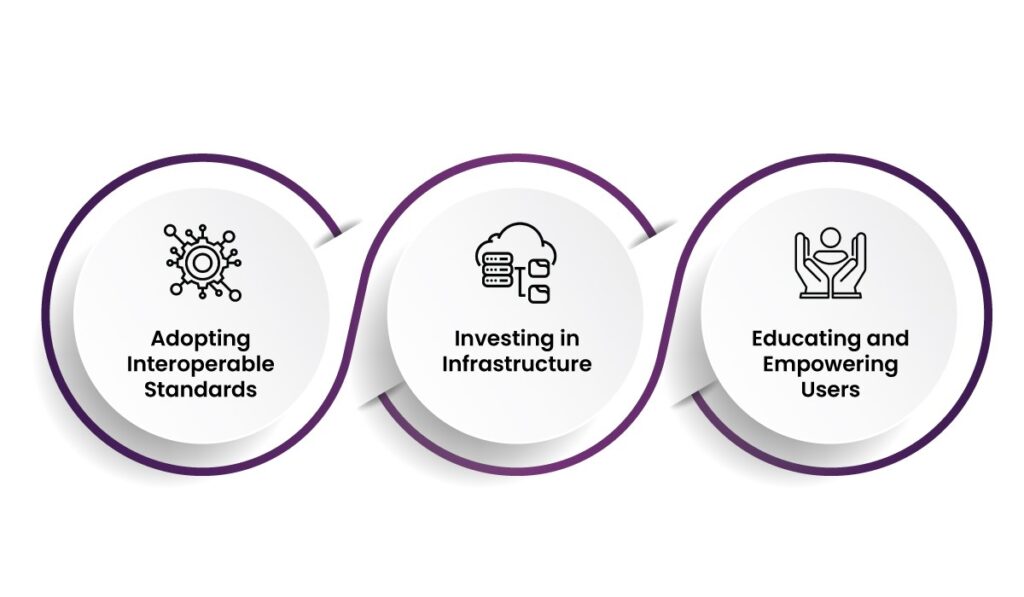
Final Words
A unified healthcare ecosystem is the key to addressing many of the challenges plaguing modern healthcare systems. By leveraging a central repository of patient data, stakeholders can break down silos, improve collaboration, and deliver more efficient and effective care. The journey toward unification requires effort and investment, but the rewards—in terms of patient outcomes, cost savings, and operational efficiency—are well worth it.
As technology evolves, the dream of a seamless, connected healthcare system is closer than ever. It’s time for stakeholders to come together and take bold steps toward building a unified ecosystem—one that places patients at its center and transforms healthcare for generations to come.
FAQs
1. What is a unified healthcare ecosystem?
A unified healthcare ecosystem is an interconnected system where patient data is seamlessly shared across hospitals, clinics, laboratories, and other healthcare providers.
2. How does data fragmentation affect healthcare delivery?
Data fragmentation leads to delays, missed diagnoses, and duplicate testing, which increases costs and frustrates patients.
3. What are the benefits of centralized patient data for healthcare providers?
Centralized patient data improves decision-making, reduces administrative workload, and enables personalized treatment by providing a comprehensive view of a patient’s medical history.
4. Can a unified healthcare ecosystem reduce healthcare costs?
Yes, a unified ecosystem helps reduce overall healthcare expenses by minimizing redundant tests, optimizing resource allocation, and improving operational efficiency.
5. Is centralized patient data secure?
With robust encryption, access controls, and audit trails, centralized systems can offer enhanced security and simplify compliance with data protection regulations.
6. What technologies are needed to build a unified healthcare ecosystem?
Technologies like cloud computing and standardized protocols such as HL7 and FHIR are necessary for supporting large-scale data exchange and integration.



